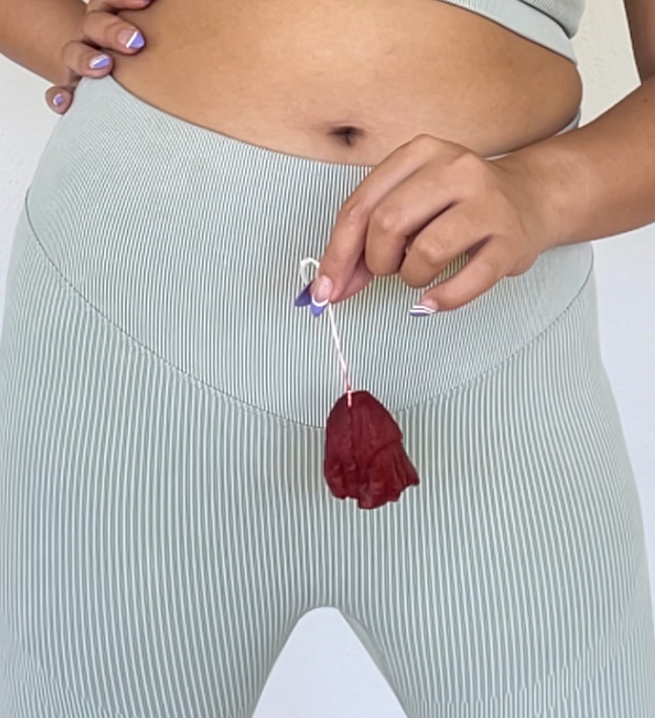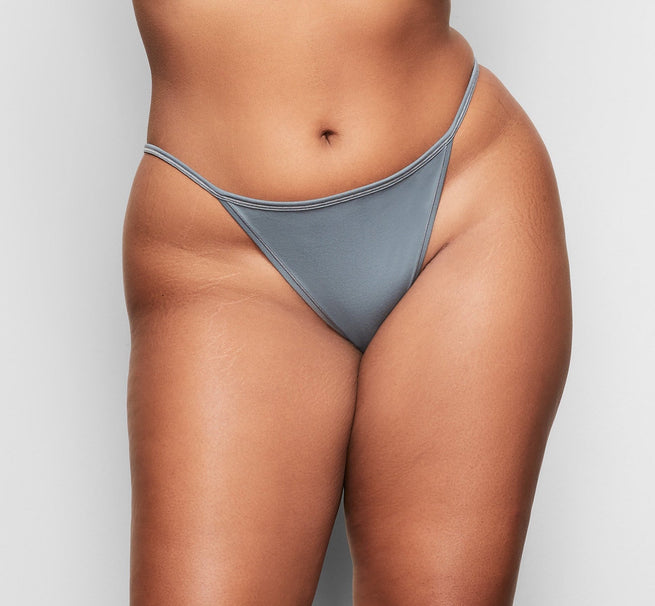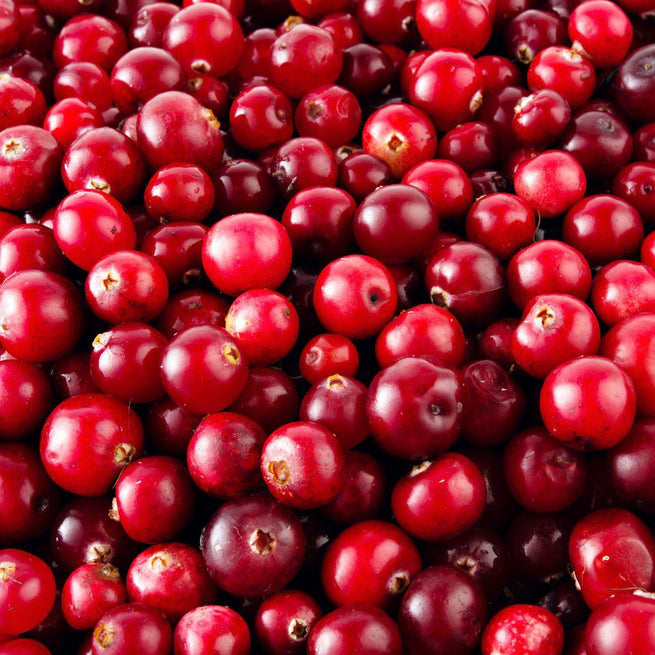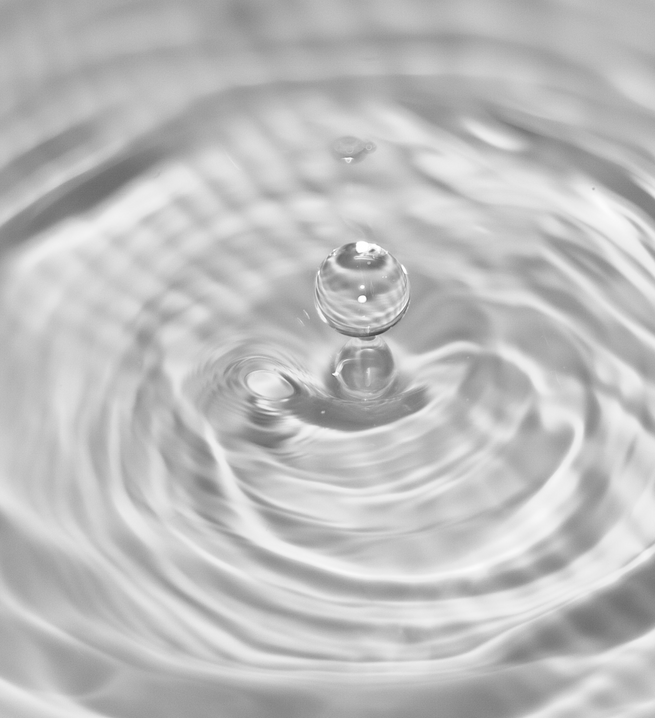
Vaginal Wellness Myth-Busting
Cheeky Team
You’re gonna put what in your vagina?
Just like with many other viral health and/or beauty hacks and trends, the world of vaginal care is filled to the brim with a veritable minefield of bad advice from the blatantly untrue to the downright dangerous. Much of it is plagued with the same subliminal messaging that seems to follow women everywhere; the body you were born with is not good enough and you should willingly go to extremes to change it. Of course, many of these trends are things people try out of desperation. Folks who experience chronic vaginal infections or UTIs might be willing to do anything at a certain point, and, trust me, I get it. In my early twenties putting cloves of garlic up your vagina was all the rage amongst my hip NYC friends. And, sweetie, I did it. Did it do anything positive for me? Not that I could tell. Did it do anything negative? Also, nothing noticeable, luckily. But the point is that I did it without really knowing whether it was a good idea. It could have just been harmless snake oil or it could have turned out to be poison, and that’s the point really. Don’t subject your vagina to things that might be a good idea. It’s not worth it to find out that it was a really bad idea after all.
I do wonder if it's the tabooness of everyday conversations about vaginal wellness and thus a lack of understanding about the vagina itself is what allows misinformation and malpractice to fester so readily online. In a recent interview with Harvard urogynecologist, Dr. Emily Von Bargen, I asked for her medical opinion on a number of vaginal care practices that circulate on social media and via word of mouth, and she had some very definitive answers. No doubt, vaginal wellness falsities will continue to live on the internet for a long time to come, so in a sea of opinions and information, how do you discern fact from myth? According to Dr. Von Bargen, it’s actually pretty simple. The bottom line is; don’t put random things in your vagina.
There are, of course, certain things that can go in there. For example, nontoxic period products (removed in a timely manner), non-toxic and non-irritating lube, certain suppositories (when directed by a medical professional, certain over the counter suppositories to treat things like yeast infections, or over the counter boric acid suppositories in the case of severe yeast infections), clean sex toys, washed apendages, a penis after a conversation about testing and consent. But in regards to the vast majority of objects - both organic and inorganic - Dr. Von Bargen says, “We should really avoid putting anything in the vagina that we don’t need to.” The vaginal biome does not need to be protected because it is fragile, it needs to be protected because it is a self-possessed environment that contains its own powerful system of care, which usually works very well if you let it.
Put it in the soup, not the vagina.

Two of the popular practices we discussed in terms of DIY infection remedies were the good old garlic clove trick and soaking tampons in yogurt. Neither of these are scientifically-proven to alleviate or prevent vaginal infections like bacterial vaginosis or yeast infections. In fact, because the garlic clove or the yogurt might not be completely sanitary when placed into the vagina, they could actually start an infection or make an existing one worse.
Boric acid suppositories should only be used to treat severe yeast infections

Recently, the use of boric acid suppositories has become more widespread. I was telling a friend that I was struggling with some chronic bacterial vaginosis, particularly after sex, and her immediate response was “Just pop a boric acid suppository in there after you do it! It’ll clear the irritation right up!” It sounded so easy, like just popping a magical bean inside of my vagina...So I bought a pack and tried it. Did it help? It might have, but Dr. Von Bargen warned against the overuse of boric acid suppositories. “They are often used for the stronger and more resistant strains of yeast that can grow. Yeast infections that are refractory or nonresponsive to more mainstream treatment.” It’s not something that’s recommended on a weekly basis. “You don’t want to change the microbiome of the vagina,” she says. “The boric acid is going to change the pH and that’s good if you’re treating a pathogen or bacteria that’s there, but if it’s not there then you might be changing the normal flora which can lead to more infections.” And, reminder, Never, EVER, under any circumstances, ingest a boric acid suppository orally. They are toxic if taken by mouth.
Honestly, yeah, I was bummed to hear that boric acid wasn’t the magical cure all that my friends and the internet wanted it to be, but, hey, sometimes the truth hurts. And it's OK. Onwards and upwards.
Vaginal douching

There’s a is a longstanding tradition in our patriarchal society of dictating to women that there is something wrong with their body, that the optimal body is not their actual body, but some nonexistent version of Woman projected upon all of us (see Shea's article on hairless vulvas in art history if you want to spiral on that shit). As I mentioned at the beginning, the pervasive drive for bodily perfection that permeates the health and beauty industry at large is unfortunately also very present in our orientation toward vaginal care. Sure, waxing, shaving, and lasering could fall into that category (that’s more of a vulva care thing), but what I’m really talking about here are invasive practices like douching, vaginal steaming, and the use of scented and flavored suppositories to alter the smell and taste of the vagina (yes, honey, I said flavored.)
“Vaginal douching is basically putting anything in the vagina to wash the tissue,” Dr. Von Bargen says. I.e., water, vinegar, cleanser (putting garlic or yogurt up there to cleanse it would be considered douching as well) or an actual douching device to stream water or other substances into the vagina to clean it. The practice dates back to the 1800s and has a long, toxic history involving a parade of horrifying water tanks, hoses, syringes, and bags meant to clean and freshen the vagina. People have attempted to use it as a form of birth control (washing out semen won’t prevent pregnancy), but mostly it's purpose is to try and eliminate natural things that people find undesirable about the vagina. Scent, taste, discharge, menstrual blood. The underlying messaging with all of this is that the vagina and its normal and healthy processes are dirty. This messaging is especially toxic considering that douching is not only unnecessary but actually quite dangerous. According to OSHA, douching can cause bacterial vaginosis, pelvic inflammatory disorder, ectopic pregnancy, vaginal irritation and drying, and can increase your risk of contracting STIs. “You really don’t want to douche,” Dr. Von Bargen says.
So, yeah, basically, the douching vibes are bad. Very bad. The same goes for vaginal steaming (sitting over a bowl of steaming water, sometimes infused with herbs) - essentially just douching in steam form - it can cause infection, irritation, and if the steam’s too hot, it can burn you.
In 2020, Health magazine did a full run-down of the scented/flavored vaginal suppository fad that went viral on TikTok. The company that makes the vaginal “melts” claims that they are completely natural and nontoxic or irritating, but as an OBGYN in the article notes, “Just because something is ‘natural’ does not mean that it won’t alter the vaginal pH.” It’s no different than the garlic clove issue. Just because it’s organic doesn’t mean it won't be irritating or cause infection. And ultimately, if you’re hell bent on trying one of these vaginal melts, it seems important to have an honest check-in with yourself about why.
“You do not need to buy any soap specifically for the vagina.”
So, now that we know what we are not supposed to do to clean and care for the vagina, the next question is, what are we supposed to be doing? Dr. Von Bargen’s answer is extremely straightforward; “Nothing. Just let the water run down the vagina. You don’t want to put anything in it, because it is going to make things worse.” Really? Nothing? Really. Nothing. “You can lather your public hair or the top of the vulva, but you don’t want to go down lower where it can get into the vagina. The best bet is really just to let the water run down while you’re cleaning your body. You don’t want to put anything inside the vagina because it can lead to infection, which is what I think a lot of women don’t realize. Because we think cleaning is always better, but actually, in the vagina it's not. You do not need to buy any soaps specifically for the vagina.” You heard it here, folks. Save your money, skip the vaginal soaps completely.
There’s a lot of vaginal care information and misinformation floating around out there. And on top of that, a lot of cultural shame about vaginal care and the vagina itself. It’s not a great combo for having open and informed conversations about health. Though it can sometimes feel isolating to wade through all of it, we are truly all out here together trying to figure this shit out. My new vaginal health motto is going to be; friends don’t let friends vaginally douche. How bout we make that go viral.
The Cheeky The Cheeky The Cheeky The Cheeky
Recommended For You
-

How Do I Prevent Infection When Touching a Vulva?
Touching a vulva with hands, toys, genitals, etc can spread bacteria and contribute to...Read more -

Why Does My Vagina Have a Scent?
Vaginas have slightly different scents based on your own unique vaginal bacteria and biome....Read more -

Why Is My Vulva Itchy?
An itchy vulva could be caused by anything from irritating underwear or soap to...Read more -

What’s the Best Kind of Lube for the Vagina?
Basically, the best kind of lube for the vagina is whatever kind of lube...Read more -

Is It Normal to Not Orgasm From Penetrative Sex?
It is very normal to not orgasm during penetrative sex. Although vaginal orgasms are...Read more -

What Is Trichomoniasis?
Trichomoniasis (trich) is a common sexually transmitted infection caused by a parasite. Symptoms include...Read more -

Does My Vagina Fill With Water When I’m Swimming?
Your vagina does not fill with water when you’re swimming. The vagina isn’t just...Read more -

What Are the Risks of Going on Birth Control?
Birth control can be awesome for preventing pregnancy, regulating periods, and treating acne. However,...Read more -

How Can I Prevent TSS?
Toxic shock syndrome (TSS) is a condition caused by exposure to certain toxin-producing bacteria...Read more -

Why Does My Vagina Smell Like Fish?
A fishy smelling vagina usually indicates bacterial vaginosis (BV). This is an extremely common...Read more -

Relieve UTI Pain at Night
UTI relief, fast! Waking up in the middle of the night with a UTI...Read more -

Can Guys Sense if You’re Ovulating?
There’s inconclusive evidence as to whether men can tell when women are ovulating. During...Read more -

Why Are My Periods So Heavy?
If you have to change your pad or tampon after less than two hours...Read more -

This Vagina Smells Like My Candle
In 2020 Gwyneth Paltrow’s infamous wellness company, Goop, debuted a $75 candle with the inscription, This Smells Like My...Read more -

Best Underwear for Your Vagina
Cotton truly is the best underwear material for your vagina. The key is that...Read more -

How to Have Great Sex and Avoid UTIS
You know what makes sex really great? Not getting a UTI afterward. And, here’s...Read more -

Can Condoms Help Prevent Vaginal Infections?
Many studies have shown that using a condom during sex decreases your risk of...Read more -

Are Vaginas Different Sizes?
The average length of a vaginal canal is around 3.5 inches, though they come...Read more -

Cranberry Juice for UTIs?
“UTIs are very common.” Lots of women struggle with them and no one needs...Read more -

What Is a UTI?
A urinary tract infection is an infection of your urinary system, which can include...Read more -

Are Thongs Okay to Wear if I’m UTI-Prone?
If you’re UTI-prone you can totally still wear thongs, as long as they are...Read more -

Why Is My Vagina Fishy?
Well, well, well, did I stumble into a fish market or is that just...Read more -

How Do I Properly Wash Sex Toys?
Most sex toys made of hard plastic, silicon, stainless steel, and glass can be...Read more -

Is Sex Good for You?
If sex is consensual and enjoyable it can be super beneficial for physical and...Read more -

How to Show Your Vagina Love on Valentine’s
So, you’ve taken a lover. You begin spending copious amounts of time together and...Read more -

Can I Have Sex With a Vaginal Infection?
Having sex while you have a vaginal infection isn’t recommended. Not only can it...Read more -

The State of Sex
Overall, the state of sex education, at least on an institutional level, doesn’t feel...Read more -

How to Spot Symptoms of a UTI
Symptoms seem like you? Try Cheeky Bonsai’s Bye Bye UTI Drink Mix to flush out...Read more -

What’s the First Thing I Should Do When I Realize I Have a UTI?
When you realize you have a UTI it's important to start drinking lots of...Read more -

Why Do I Have Low Sex Drive?
The cause for low sex drive can sometimes be hard to pinpoint. Often it’s...Read more -

Does Weather Affect My Menstrual Cycle?
Weather can definitely affect your period, though not exactly in a direct way. For...Read more -

Cranberry Juice for UTIS?
Cranberry juice, particularly cranberry cocktail, will not help your UTI. Only pure cranberry extract...Read more -

-

Is It Normal to Feel Depressed Before My Period?
It is normal to experience mood swings throughout your menstrual cycle, but if you...Read more -

Cheeky Weekly #1
Welcome to The Cheeky Weekly! This is our space for sharing interesting reads, views and...Read more -

Rachel Moranis of Stardust
It’s happening in real time. Menstrual health and wellness is far less taboo than...Read more -

Can you treat a UTI without antibiotics?
Exploring other UTI treatment options Antibiotics are an effective method for treating urinary tract...Read more -

Is Sex While Pregnant Bad for the Baby?
It's biology's way of helping you bond with your partner before the chaos of...Read more -

The Official Cheeky Playlist
For us, everyday vaginal health is as much a conversation as it is a...Read more -

-

Does My Dog Know When I’m on My Period?
Your dog can smell the difference in odor and hormone levels when you’re on...Read more -

Behind Cheeky Bonsai
“You can’t shy away from problems, you have to learn how to communicate.” Elise...Read more -

A Very Vaginal Halloween
It’s that time of the year again, when you struggle between looking hot but...Read more -

Interview with Courtney Sender
“I totally understand why a lot of people don’t love it, but I do....Read more -

Hairless Vulvas in Art History
So, why is the image of the hairless vulva so seemingly ubiquitous and treated...Read more -

Why Do I Get Constipated Before My Period?
It’s totally normal for your stomach to be off during your period. But if it feels...Read more























































